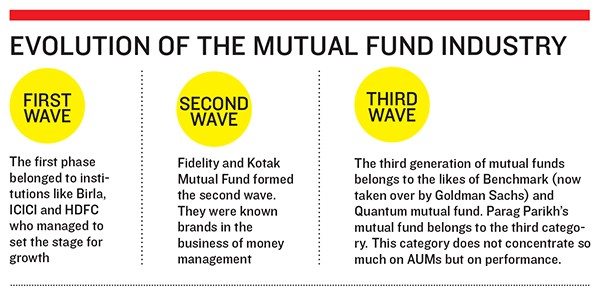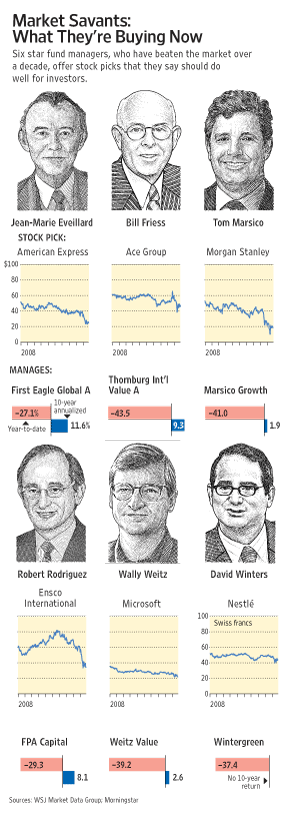Don t Give Up on Mutual Funds
Post on: 3 Апрель, 2015 No Comment

Exclusive FREE Report: Jim Cramer’s Best Stocks for 2015.
Sometimes a guy gets in your kitchen and you just can’t let it go.
I disagree. I think for the average person who doesn’t pick stocks for a living, funds are far and away the most sensible way to invest. Let’s face it, whether you’re a professor, plumber or poet, you’re probably good at a few things, but picking stocks probably isn’t one of them. Yes, you might enjoy playing the market with an E*Trade account, but if you’re not smart, diligent and lucky — and that account adds up to more than say 5% of your portfolio — the stakes are a bit too high. Each day my mailbox is full of cautionary tales from investors who found out investing can be more expensive and humbling than golf.
To be sure, fund investing has its warts, and Arne makes some solid points, but I think a little counterpoint is always healthy. So let’s chew over his 10 reasons in order:
1. The oops! factor. Sometimes positions are so large at major mutual funds that it can take days, weeks, even a month or two to work out of a position.
Yes, you might be able to dump a sagging stock quicker than the manager of a mutual fund with millions or even billions invested in single stocks.
It’s true that the folks running some of the fund world’s biggest funds aren’t as nimble as they would wish. Just two weeks ago, we saw that Bob Stansky, manager of the $80.2 billion (FMAGX ) Fidelity Magellan fund, took six months to ratchet down tech stakes. That said, most funds are smaller and don’t need to turn on a dime.
2. Yesterday’s story. I want to buy today’s best ideas based on today’s prices, not yesterday’s story.
Just about any fund will ride its winners, leaving it with some falling stars from the previous year at any time. But then again, there are other ideas in the portfolio too. I think a good fund manager — in many ways easier to pick than a stock — has a better chance of digging up the next new new thing than part-timers. For instance, many fund managers did sidestep some of last year’s carnage.
In 2000 the Nasdaq Composite fell almost 40%, while the average tech-stuffed big-cap growth fund lost 13.8%. Many growth managers like Transamerica’s Jeff Van Harte and Merrill Lynch’s Larry Fuller took evasive action by dumping tech shares and putting that cash in less racy fare.
3. Flow of funds. Mutual fund managers have to adjust portfolios constantly based on inflows and outflows.
Arne is right to point out that managers of a few popular funds routinely get a glut of hot money, only to see it file back out the door when their style falls from favor. It’s true that steep inflows can hamper a manager if their cash balance outstrips their list of ideas. And high redemptions can force them to add a healthy dose of selling pressure to their own stocks as they sell shares to cash out rattled investors.
This hurt value funds in 1998 and 1999 when investors bolted for tech-heavy growth funds that rode the Nasdaq to outsize gains. While this is a real issue, however, the pain typically only lasts until the market shifts. Value funds, for instance, are now flush with cash as growth-sick investors shift gears.
4. Too many positions. Give me your top 10 or 20 ideas — the companies you have a passion about, not the afterthoughts that linger in the recesses of a large portfolio.
This idea sounds good, but in practice it’s a mucky matter. In the late 1990s fund companies large and small tried to replicate the investment and marketing success of the (JAVLX ) Janus Twenty fund by simply picking 20 or so stocks, gulping down millions of shares and hoping for the best. That worked out well until the Nasdaq’s music stopped. Fact is, betting big on a small basket of names can lead to higher highs, but also lower lows — often too low for many investors’ tastes. Consider that a hypothetical $10,000 investment in the fund at the start of last year would be worth a little over $5,800, according to Morningstar. The Twenty fund, closed to new investors, is down more than 37% over the past year, trailing just shy of 90% of its peers, according to Morningstar.
Those peers carry nearly 90 stocks in their portfolios, on average, and their diversification is precisely what stopped some of the bleeding.
5. Poor performance. It’s true that it’s not easy to beat the market, and that’s why Legg Mason’s Bill Miller is the only fund manager to top the S&P 500 in each of the past 10 years.

Then again, it’s not as if individuals have it easy either. An equally weighted portfolio of the 20 most widely-held stocks in Merrill Lynch brokerage accounts is down 30.2% over the past year, compared with an 11.8% loss for the S&P 500 and an 11.6% loss for the average big-cap blend fund.
6. Tax efficiency. This is a great point because too many investors ignore their funds’ tax-efficiency or lack thereof. After 1999’s heady gains many mutual funds paid out fat taxable capital gains distributions, saddling investors with a tax bill just as their account balances started to fall. It’s true, you’ve got more control over your portfolio’s tax status in a personal brokerage account, but index funds that track the S&P 500 or the Wilshire 5000 are historically quite tax-efficient. More than 60 funds are specifically designed to focus on tax-efficiency too, according to Morningstar. Also, 65% of the money invested in mutual funds resides in tax-deferred retirement accounts.
7. Personal preferences. Like Arne, many investors don’t like the idea of investing in tobacco companies or other firms who don’t appear to make the world a better place. He chafes at the idea that there are just a handful of mutual funds that use social screening criteria, but there are actually almost 70 by Morningstar’s tally. While each takes a different tack, and there’s no guarantee that their values match yours, this cupboard is hardly bare.
8. Management issues. The sharpest minds, in general, don’t manage mutual funds.
Yes, private money managers can earn more money than an average fund manager and money is the carrot that draws talent. But, as Arne admits, the likes of Oakmark’s Bill Nygren and Third Avenue Value’s Marty Whitman. to name precious few, prove that some of the brightest stock pickers out there run mutual funds. We’ve pointed out some funds with profoundly poor management, but these dogs are in the vast minority.
9. Too-high costs. Yes, some mutual funds levy lofty expenses, but the good thing about the vast number of funds is that you can use sites like Morningstar.com to screen out rip-offs and still have many solid, inexpensive options.
You could use an ultra-cheap online broker and pay a few dollars to buy shares, but a fund can offer you far greater diversification with low costs, too. Consider that if you invested $10,000 in the no-load (VFINX ) Vanguard 500 Index fund, its 0.18% annual expense ratio would add up to an $18 annual fee if your balance went nowhere. That’s an investment in an S&P 500 portfolio for not a lot of money. Given that it’s typically best for most investors to spread their money among more than a handful of stocks and that the average U.S. stock fund delivers diversification and professional management for a 1.21% fee — or about $12 for every $1,000 invested — that’s not such a bad deal.
10. Position-building. Yes, you can build a significant position in a matter of moments through an online broker, while it can take the manager of a big fund hours, days or even weeks to do the same. This is true of many massive funds, but it ignores the idea that if you’re picking the right names, a point here or there doesn’t add up to much over time.
If you’re won over and are ready to cast your lot with funds again, check out our fund screens, perfect portfolio and low-maintenance portfolio to look at some solid options and see how they can fit together.














